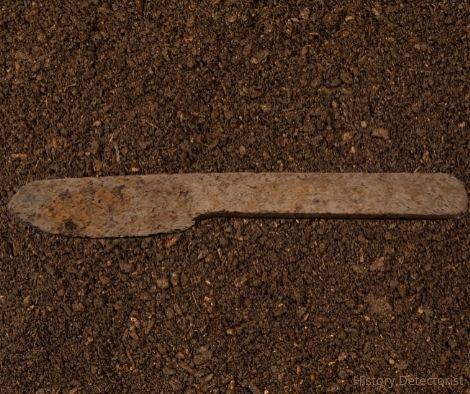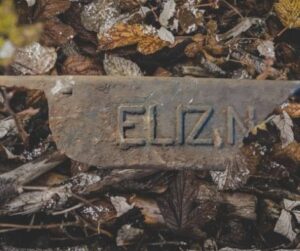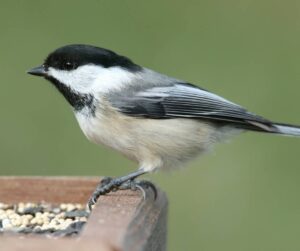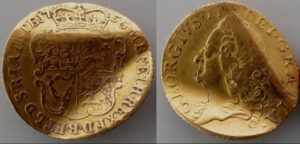I had little idea what it could be when my detector alerted loud and clear. I had my Bounty Hunter Tracker IV set to more or less ignore ferrous metals, and for the most part it was doing a great job! So unless it was a hoard of some description, it had to be a substantial piece of metal. I thought and believed it to be the latter, perhaps an agricultural artifact? Since I was detecting in a local park that was once a farmer’s field, that wouldn’t be a stretch at all.
After digging a good six or seven inches down I first caught sight of it. Okay, it’s iron, but what on earth was it? I hauled my prize to the surface, after several more minutes of digging, and cleaned it off as best I could. It weighed a ton, figuratively speaking. I first guessed that it was some type of hand axe, but the weight of it meant that you couldn’t swing it for too long, so I ruled that out, sort of. My next thought was that it was meant to be an axe, but the process had went wrong, so it was discarded. But why in the middle of a field? There were no other signs of metal within the vicinity of my mysterious find, so that ruled out a dump.
As I said, I had no clue as to what it was. So I placed it in the trunk of my car, and carried on with detecting. The only other thing I found that day, was a 1996 Toonie, which became the focal-point of an article I wrote, and that you can find here.
After posting a picture of it on a Facebook group, I learned it was a sod cutter from a walk-behind plow. Thank you! That was all I needed to put on my deer-stalker, and begin my investigation into its history. For the record, my reference to the deer-stalker is merely artistic license. But you knew that I hope!
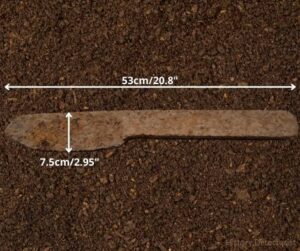 After a few hours I got another lead on what my find could be. While searching the internet and viewing plow after plow, comparing their sod cutting blades, I came across an illustration on a website owned by Artist, Cartoonist, Historian and Writer Jenny Phillips. Based on Jenny’s illustration, and comparing it with other plows she had sketched, I believed that I found the blade! It seemed that I had unearthed the sod cutter belonging to a Fleury plow.
After a few hours I got another lead on what my find could be. While searching the internet and viewing plow after plow, comparing their sod cutting blades, I came across an illustration on a website owned by Artist, Cartoonist, Historian and Writer Jenny Phillips. Based on Jenny’s illustration, and comparing it with other plows she had sketched, I believed that I found the blade! It seemed that I had unearthed the sod cutter belonging to a Fleury plow.
Further research ensued and I learned that:
Joseph Fleury Jr, and his brother Alexander, in 1859, opened a blacksmith shop in Machell’s Corner, now called, Aurora, Canada. However, in 1865, Alexander left the partnership and started his own blacksmithing business in Markham, Ontario. Joseph Jr remained in Aurora and started the Aurora Agricultural Works. It is here that he created his steel Fleury Plows. Until then, plows were made from wood, and were apt to break under stress. So it was no surprise that Fleury’s plow sold all over Canada and world-wide.
Fleury entered municipal politics and was elected to local office in 1866. He went on to become Reeve, (similar to a Mayor), of Aurora in 1873. Joseph Fleury Jr, a father of five, died suddenly at the age of 48 on September 23, 1880. His sons continued the business in the Aurora Agricultural Works building (until 1945), then in Elora, Ontario until the 1980s.
Joseph Fleury Jr was inducted into the Ontario Agricultural Hall of Fame in 1988.
Am I absolutely certain the sod cutter blade is from a Fleury plow? Well, no. Not 100%. However, given the mass production of this plow, and that it was manufactured fairly local to where I found it, makes it a high probability that it is. Regardless, this find has afforded me the opportunity to discover Joseph Fleury Jr and his plows. I am continuing with my research, and will keep you posted on anything I find in this regard.

